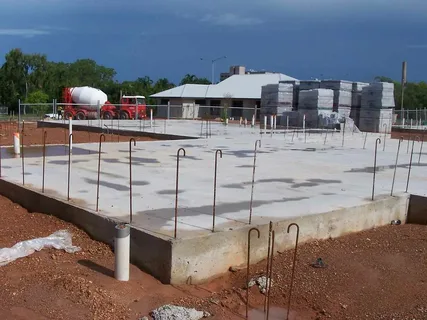Types of Home Foundations and How to Choose the Right One

The first, most important decision a homeowner makes before starting their project is deciding among the home foundation types. You can use the most expensive materials in your entire house, but if the foundation is not strong, all that money has gone to waste. A good foundation is what keeps the house stable and strong against rain or soil movement. When you decide between different types of foundations, you must keep different aspects in mind. This article will discuss them in another section.
Sometimes it becomes difficult for the client to make an individual decision on what they want. That is why construction estimating services are there to help you. They will not only help you with budget calculation, which clears up your confusion about affordability. They also give you reasonable suggestions so you can make a good decision. This article will explore the types of foundations and how to choose between them.
Home Foundation Introduction:
The foundation of a house is the major part of the house, which has to bear two things: the weight of the building and what is below it. The foundation should be strong and stable to keep the structure above it in place. It should also be installed carefully, leaving the soil in consideration, because a bad decision about the foundation can lead to results such as soil shifting. This eventually destroys the building entirely.
Home Foundation Types:
This section is going to discuss the four types of foundations along with their pros and cons.
of foundation does not cost much as compared to other options. In this foundation, concrete is directly poured on the ground, and it can be reinforced by adding rebar. But it works only in hot climate regions where the ground does not freeze. If this method is used in cold areas, it will break and become unbalanced within a year.
Pros:
-
It is less costly and is easy to build.
Cons:
-
As there is no gap between the ground and the building, the plumbing and electrical work become difficult. As the access is not possible.
-
The frost line can damage the building's foundation.
2. Crawl Space Foundation:
It is a type where there is a gap between the ground and the building. It is supported by concrete walls along with piers to lift it above the ground. It allows proper ventilation along with some other advantages.
Pros:
-
It allows proper ventilation.
-
As the house is above ground level, it cannot be damaged by water contact.
-
Plumbing and electrical work become easier.
-
As it is above ground, installing insulation can keep the house’s temperature stable.
Cons:
-
If it is not sealed properly, pests can damage it.
-
If proper ventilation does not happen, mold can form under it.
3. Basement Foundation:
Basements lie below ground level. They also serve as a foundation for the structure over them. The base of the basement is kept below the point where frosting and defrosting do not happen.
Pros:
-
The walls of the basement are made from concrete. It supports the structure over it.
-
It gives you an extra floor in the house.
-
Increased space increases the value of the property.
Cons:
-
An extra floor means extra cost for construction.
-
It needs serious waterproofing because it is below ground level.
Get a proper estimation from Concrete Estimating Services. They will give you a plan of the overall cost that will be involved in the process. As the walls of the basement will be made of concrete, it is better to get the material takeoff and other details in advance.
4. Pier and Beam Foundation:
It is somewhat similar to a crawl space, but not exactly. In pier and beam, concrete piers and wooden or steel posts are used. And that too is grounded deep to support horizontal beams.
Pros:
-
If the ground is not even, piers can be modified in length.
-
The lifted structure allows easy access to certain parts needed during maintenance.
-
As the structure is above the ground, it does not come in contact with water.
Cons:
-
Maybe levelling will be required after some years.
Choosing Foundation Type For Your Home:
- You should start by getting the soil of the construction site tested. It will show if there is a chance of soil shifting or not.
- Climate should be considered when choosing the foundation for your house. If the floods are common in your area, choose a lifted foundation, maybe.
- Consider your budget while choosing a specific foundation type.
When you are working on this project, get suggestions from Sitework Estimating Services. They make such decisions every day. So, they might give you better suggestions about construction on your land.
Conclusion:
For people starting a construction project, it can be overwhelming to decide which type of foundation suits their house well. Contractors and estimators are well aware of these, as it is their everyday job. But for a homeowner, it is a new project. That is why they need a proper understanding of all the types. So they can at least have some knowledge to have a discussion with their contractor.
- Art
- Causes
- Crafts
- Dance
- Drinks
- Film
- Fitness
- Food
- Spellen
- Gardening
- Health
- Home
- Literature
- Music
- Networking
- Other
- Party
- Religion
- Shopping
- Sports
- Theater
- Wellness



